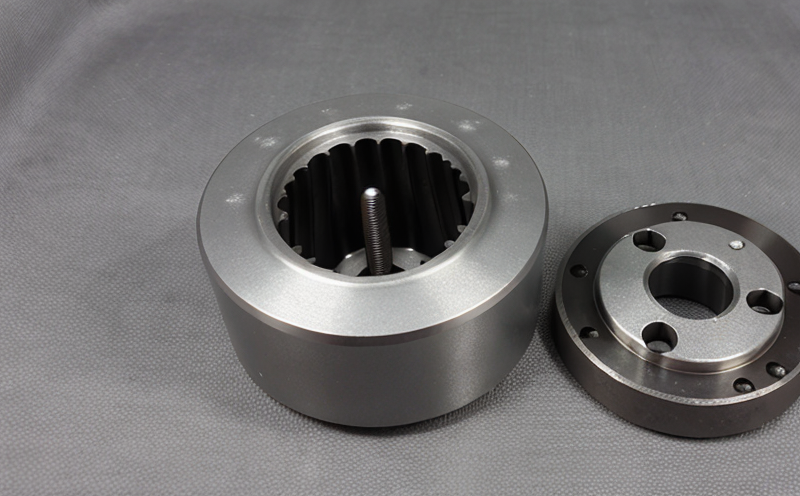ISO 6508 Rockwell Hardness of Additively Manufactured Metals
The ISO 6508 standard is a cornerstone in material testing, particularly for assessing the hardness of metallic materials. This test is especially significant when dealing with additively manufactured (AM) metals due to the unique microstructural characteristics and processing history that can significantly influence mechanical properties.
Additive manufacturing involves layer-by-layer deposition of material to form parts or structures, which can lead to complex internal microstructures not found in conventionally manufactured materials. These microstructural differences necessitate precise hardness testing methods like ISO 6508 to ensure the integrity and performance of AM components. The Rockwell hardness test provides a non-destructive method for assessing the mechanical properties of these parts.
The Rockwell hardness scale used in this standard is specifically designed for metallic materials, making it ideal for additively manufactured metals. It measures the depth of an indentation made by a testing indenter under a specified load and compares it to standardized scales. The resulting value provides insight into the material's resistance to localized plastic deformation.
When applying ISO 6508 in this context, several factors must be considered for accurate measurement:
- The selection of appropriate indenter geometry (e.g., ball, cone) based on the part size and shape
- The application of a specific test force to ensure consistent results
- The use of proper specimen preparation techniques to minimize surface irregularities that could affect hardness readings
- The consideration of heat treatment effects if applicable
Accurate testing is crucial for quality control and compliance, especially in industries such as aerospace, automotive, and medical devices where the mechanical properties of materials directly impact product performance and safety.
| Applied Standards | Description |
|---|---|
| ISO 6508-1:2014 | Rockwell hardness test, part 1 - Indenters and scale HRA to HRF |
| ASTM E18:2020 | Standard practice for tensile testing of metals |
| EN ISO 6508-3:2019 | Rockwell hardness test, part 3 - Indenters and scale HRG to HRT |
The use of these standards ensures that the testing methodology is consistent with industry best practices and aligns with international quality assurance frameworks.
Applied Standards
| Applied Standards | Description |
|---|---|
| ISO 6508-1:2014 | Rockwell hardness test, part 1 - Indenters and scale HRA to HRF |
| ASTM E18:2020 | Standard practice for tensile testing of metals |
| EN ISO 6508-3:2019 | Rockwell hardness test, part 3 - Indenters and scale HRG to HRT |
Why Choose This Test
The ISO 6508 Rockwell Hardness of Additively Manufactured Metals offers several advantages that make it a preferred choice for quality assurance and compliance:
- Non-Destructive Testing: The method allows for testing without damaging the part, which is crucial in industries where parts are expensive or difficult to replace.
- Precision: It provides precise measurements that can help identify any inconsistencies in the manufacturing process.
- Industry Acceptance: Compliance with international standards ensures acceptance across global markets and regulatory bodies.
- Data Consistency: The standardized approach ensures consistent results, facilitating easier comparison between different batches or suppliers.
The test is particularly valuable for AM metals because it can reveal the effects of various processing parameters on material properties. By understanding these effects, manufacturers can optimize processes to produce parts with desired mechanical properties.
For quality managers and compliance officers, this test provides critical data needed for decision-making regarding product performance and safety. For R&D engineers and procurement specialists, it offers insights into the development of new materials and sourcing strategies that meet strict standards.
Quality and Reliability Assurance
- Consistency: Ensures that each test follows a standardized procedure to achieve consistent results.
- Data Accuracy: Provides reliable data for quality control, ensuring products meet the required specifications.
- Regulatory Compliance: Helps in meeting international and local regulatory requirements.
- Cost Efficiency: By identifying defects early in the production process, it reduces costs associated with rework or scrapping faulty parts.
- Customer Satisfaction: Ensures that products meet customer expectations and specifications, thereby enhancing customer satisfaction and loyalty.
The use of this test contributes significantly to maintaining high standards of quality and reliability in the manufacturing process. It plays a vital role in ensuring that additively manufactured metals are fit for their intended applications.





